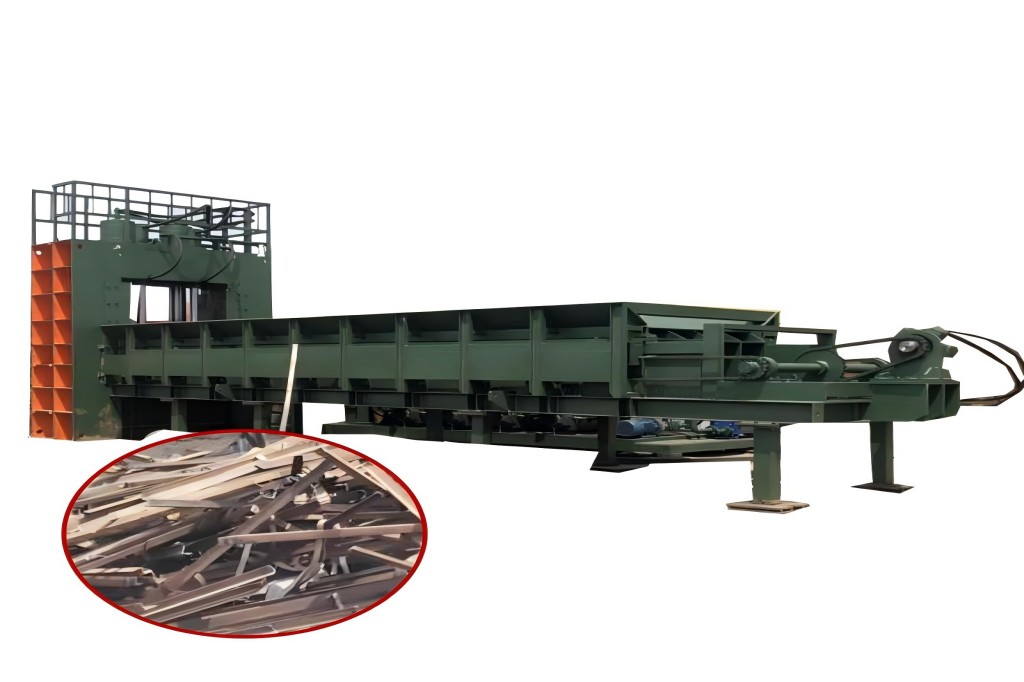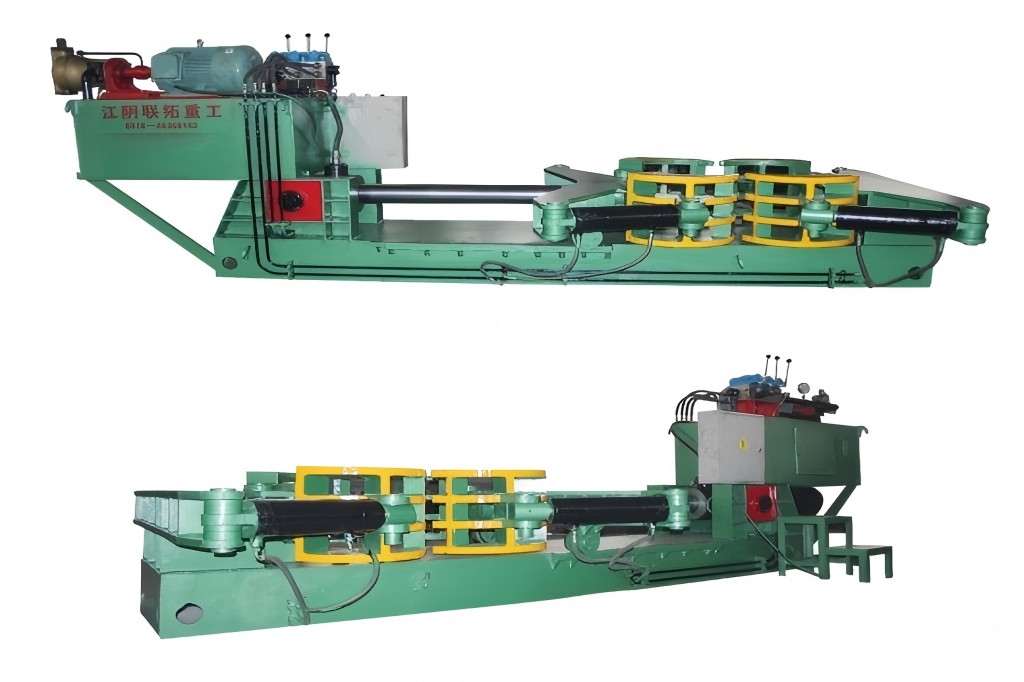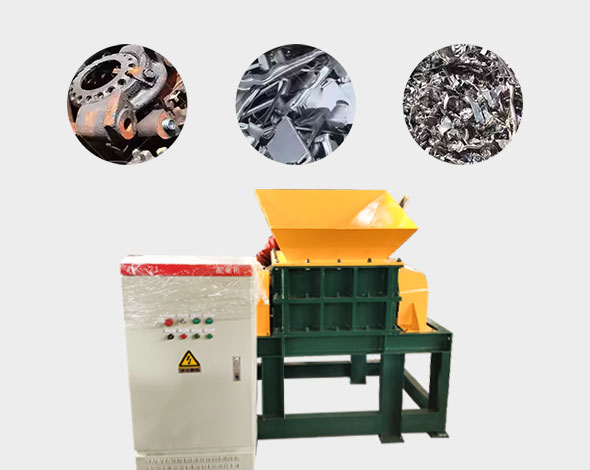The Hydraulic Gantry Shear Machine, known for its precision, power, and efficiency, is essential for cutting thick metals in industries like automotive, construction, and recycling. This article will delve into the functionality, features, and advantages of this technology, highlighting how it meets the growing industrial needs for high-quality metal cutting.
What is a Hydraulic Gantry Shear Machine?
A Hydraulic Gantry Shear Machine is an industrial cutting tool designed to cut large volumes of metal materials. Its primary function is to shear metal sheets, bars, and plates into smaller, manageable pieces. The machine is built with a hydraulic system that generates the necessary force to move the cutting blades, ensuring that even thick and durable metals like steel and aluminum are precisely cut.
How it Works
The machine operates on a hydraulic system, which is responsible for delivering the immense force needed to operate the cutting blades. Hydraulic pumps generate the pressure, valves regulate the flow, and cylinders move the blades. This coordinated system ensures clean, precise cuts. The system ensures evenly distributed force, allowing for clean and precise cuts.
The cutting mechanism is adjustable, allowing operators to change the cutting depth and pressure according to the metal’s thickness and type. The gantry structure provides flexibility to move the machine across larger materials.
Types of Metals Processed
Hydraulic gantry shear machines can process a variety of metals, making them versatile tools for industries handling multiple materials. Here are some of the metals frequently processed:
- Steel: Widely utilized in the construction, automotive, and heavy industrial sectors.
- Aluminum: Lightweight and corrosion-resistant, commonly used in aerospace and automotive applications.
- Copper and Brass: Known for their superior electrical conductivity and corrosion resistance, they are frequently employed in electrical and plumbing applications.
- Stainless Steel: Resistant to rust, it is commonly utilized in sectors such as medical equipment production and food processing.
Key Features
Hydraulic gantry shears are outfitted with features that improve their performance, safety, and efficiency. These features ensure the machine handles various industrial applications effectively.
Cutting Capacity
Hydraulic gantry shears can handle a wide range of metal thicknesses, typically from 6mm to over 50mm. The machine can also cut metals of various lengths, with some models capable of cutting materials several meters long. This flexibility suits both precision cuts and large industrial tasks.
Blade Efficiency and Versatility
High-strength materials like carbide or hardened steel are used to make the cutting blades. These blades maintain sharpness over long periods, ensuring consistent cutting. Many machines feature adjustable blades, allowing operators to modify the cutting angle or depth based on the metal being processed.
Hydraulic Power and Controls
The hydraulic system powers the cutting blades. Sophisticated control systems enable operators to fine-tune pressure, speed, and cutting depth, guaranteeing optimal performance for every task. Hydraulic systems also offer smoother and more controlled cutting, reducing wear compared to mechanical systems.
Safety Features
Ensuring safety is a primary concern in industrial operations. Hydraulic gantry shears are equipped with built-in safety features such as emergency stop buttons, safety barriers, and automated shutoff mechanisms that activate in case of overload or malfunction. These features protect operators and enhance the machine’s durability.
Precision in Metal Cutting
Precision is essential in modern metal-cutting operations, especially in industries requiring exact measurements and consistent quality. Hydraulic gantry shears are known for their high-precision cutting, making them ideal for industries that rely on precise components.
Importance of Precision in Key Industries
- In automotive manufacturing, precision is crucial to ensure car parts fit together perfectly during assembly. Even a minor mistake in cutting can result in expensive rework.
- In construction, precision cutting is necessary to produce steel beams and aluminum panels that meet safety and durability requirements.
- In the recycling industry, precision cutting ensures scrap metal is cut into uniform sizes, simplifying processing and increasing the value of recycled materials.
Reduction in Material Waste and Increased Accuracy
Hydraulic gantry shears allow for clean, accurate cuts, reducing material waste. Accurate cutting maximizes material utilization and reduces production costs by minimizing the need for extra processing or corrections.
Power and Efficiency
Hydraulic gantry shears are renowned for their cutting power. They deliver immense force, capable of handling even the thickest metals.
Power Output and Impact on High-Volume Operations
The hydraulic system delivers the essential power to swiftly cut through large amounts of metal. This is especially important in industries like construction or recycling, where high volumes of metal need to be processed daily.
Cost Savings in Labor and Energy Consumption
In addition to power, hydraulic gantry shears are designed for energy efficiency. They consume less power than traditional mechanical systems, lowering energy costs. They are an affordable option for organizations due to their great productivity and automation, which lower labor expenses.
Performance Metrics and Applications
Evaluating hydraulic gantry shears involves metrics like throughput rate, cutting speed, and durability. These metrics determine the machine’s effectiveness in different industrial applications.
Throughput Rate and Cutting Speed
The throughput rate indicates the amount of material the machine can handle within a specific period. Machines with high throughput rates are ideal for industries that need to cut large volumes of metal quickly. Faster cutting speeds increase productivity without compromising precision.
Durability
Durability is crucial for long-term performance. Hydraulic gantry shears are built to last, with high-strength materials ensuring long-lasting performance and reducing the need for frequent repairs.
Common Applications
Hydraulic gantry shears are used in a variety of industries, including:
- Metal Recycling: Cutting scrap metal into manageable sizes for further processing.
- Manufacturing: Cutting raw materials for use in production processes.
- Construction: Cutting steel beams and metal panels for building structures.
- Automotive: Producing precision-cut components for vehicles.
- Heavy Industry: Processing large metal sheets for use in shipbuilding, aerospace, and other heavy industries.
Advantages of Hydraulic Gantry Shear Machines
Hydraulic gantry shears are a desirable alternative for companies in the metal processing sector due to their many benefits.
Longevity and Low Maintenance Costs
Hydraulic gantry shears are recognized for their robustness and minimal maintenance needs. The hydraulic system is designed to last, and the high-strength materials used in the cutting blades ensure that they stay sharp for long periods. Regular maintenance is minimal, which reduces downtime and repair costs.
Space-Saving and Easy Integration
Despite their powerful performance, hydraulic gantry shears are compact and space-efficient. Their compact design facilitates their seamless integration into current production processes, especially in space-constrained facilities. Their versatility also allows them to be used in a wide range of applications, further enhancing their value to businesses.
Conclusion
The Hydraulic Gantry Shear Machine is a powerful, precise, and efficient tool essential for modern metal-cutting operations. Its ability to handle various metals, combined with advanced hydraulic systems and safety features, makes it an ideal choice for industries like construction, automotive, and recycling. The machine’s power output, precision, and operational efficiency ensure businesses meet production needs while minimizing costs and material waste.




